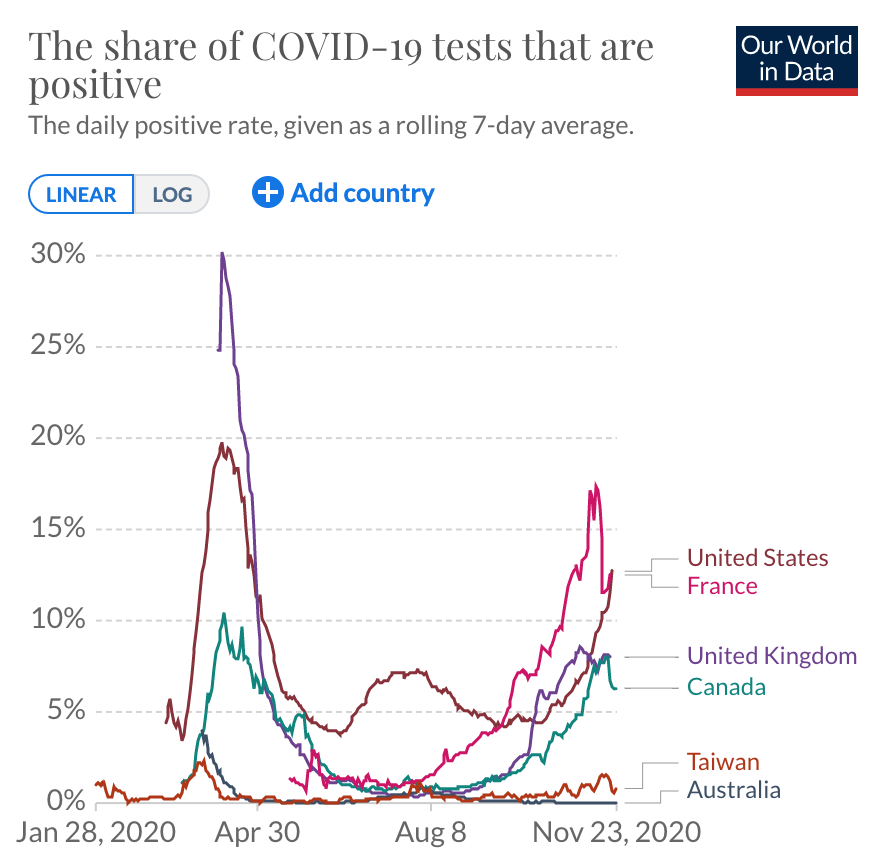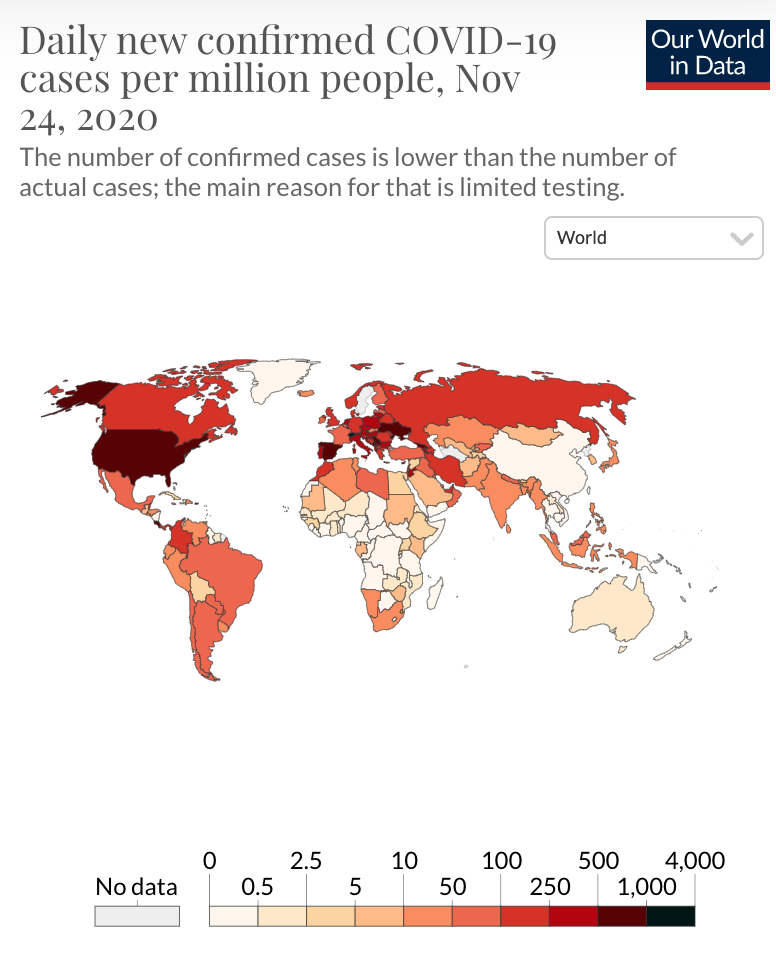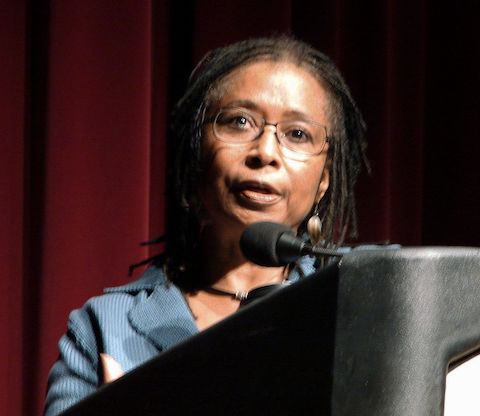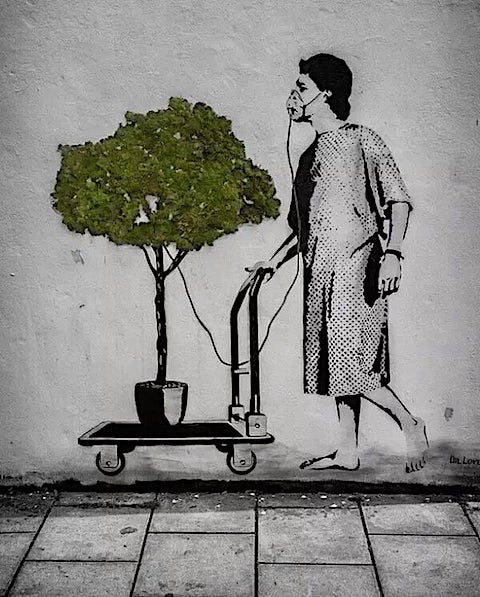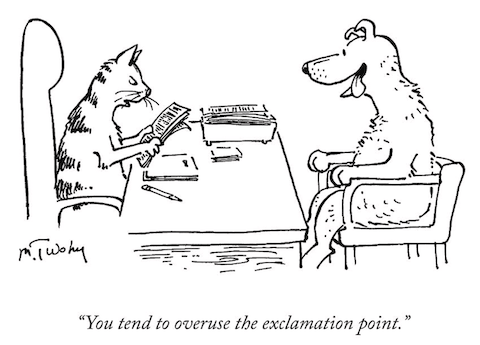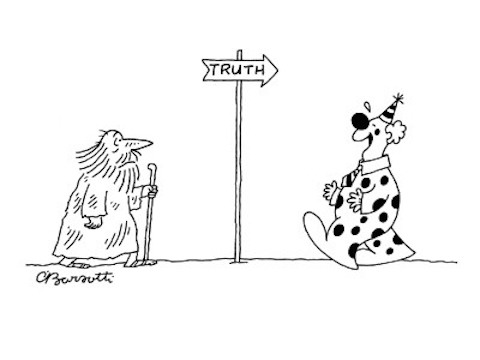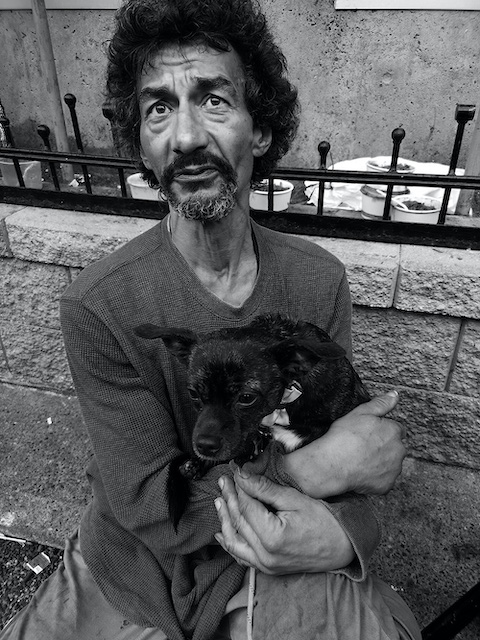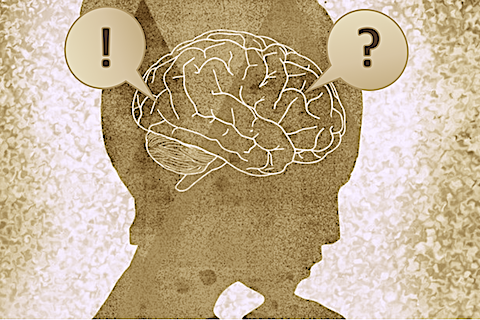
image adapted from Pixabay, CC0
This article is a bit of a wild ride. If its subject (the nature of consciousness) is not of interest, give it a wide berth. If you are interested, then since this is a particularly long post, and not an easy read, you may want to set aside some time to work through it.
I‘ve been thinking further about my review of psychologist Julian Jaynes’ 1976 book The Origin of Consciousness, and how it relates to the message of radical non-duality.
Suppose Julian was correct, and it was only about 3,000 years ago that the human brain evolved the capacity to integrate its sensemaking activities (responding to signals perceived by the senses) with its imagining activities (creating/conceptualizing mental images). This integration, or ‘entanglement’, of brain activities is, he says, necessary for what we call ‘consciousness’, the experience of having a separate self.
In other words, it was only then that the brain was able to imagine that what it imagined made sense — and especially that its idea of the self and everything else as real and separate was ‘true’. Prior to that, Julian argues, there could be no self-consciousness and hence no sense of self, and no sense of ‘other’, or of time or space or other ‘places’ where separate ‘things’ could really be and really ‘happen’. He supports his thesis with an analysis of ancient written records and ancient human activities that show evidence of a lack of any sense of self or of self-consciousness. (Even the word ‘self’ is an etymologically recent coinage.)
The sensemaking part of the brain would therefore, back then, operate purely on instinct — eg fast yellow thing is perceived ⇒ brain “makes sense” that there is danger ⇒ flee, fight, or freeze. There would already be primary and immediate feelings: fear (⇒ flee), anger (⇒ fight), and/or sadness/hopelessness/resignation (⇒ freeze).
In the imagining part of the brain secondary thoughts (perhaps of gods, or monsters, anything that might be imagined) and secondary feelings (perhaps akin to anxiety, hatred, grief or shame) might arise, but there would be no way (yet) to act on or react to them, as there would be no context for ‘making sense’ of them. They wouldn’t ‘belong’ to anyone, so they’d just arise and fall away.
As explained in my earlier article, Michael Graziano hypothesizes that what prompted the evolution of the human capacity to synthesize the brain’s sensemaking/perceiving and imagining/conceiving activities was not the need for a self. The “unconscious” human species, like many others, had apparently thrived for a million years without this capacity.
Instead, what he thinks prompted this capacity for synthesis was humans’ primal survival need to socialize with other humans. We are maladapted to a solitary existence. In collaborating ‘unconsciously’ with other humans, as many creatures do, perhaps in the search for food or in attempting to escape from a predator, there is a need to communicate. For most creatures, body language, pheromones and rudimentary vocalizations were and are sufficient communication for essential social activity.
But as we moved farther and farther from our comfortable natural habitat in the trees of the tropical rainforest, we had both the need and the capacity to evolve a more sophisticated means of communication (abstract language). And we had the need and capacity to imagine a new way of modelling reality (‘consciousness’ of the self and ‘other’), that might enable us to adapt to hostile and unfamiliar new habitats and situations.
These new evolutionary features required the capacity to integrate the brain’s sensemaking, perceptual abilities with its imagining, conceptual abilities. And so, in successful survivors in these new habitats, perhaps about 3,000 years ago, this capacity emerged, was apparently evolutionarily favoured, and has been with us ever since.
Neuroscientists have pretty much given up trying to find the ‘parts’ of the brain that ‘represent’ our sense of self. That’s likely because this sense arises not in any part of the brain but in the evolved entanglement of activities in the brain that once had separate perceptual and conceptual functions.
With this new capacity to recursively represent our selves — the capacity we call ‘consciousness’ (of self and other and ‘apart-ness’ of ‘things’ and ‘happenings’ in a conceptualized space and time), we could now evolve language to convey more precise and sophisticated information and instructions to the ‘others’ that our new ‘consciousness’ allowed us to represent and to use for our collective advantage.
I say collective because at this stage we were still subject to nature’s most fundamental evolutionary rule — the survival of the ‘fittest’, ie the survival of those collectives (within the gene, within the body, within the community, within Gaia) that best ‘fit’ with others and within the ‘system’ they were/are inseparably part of.
But from that point on, the emergence of the concept of the separate self would have brought with it the concept of selfishness, and the new challenge of weighing collective vs individual (ie the self’s) survival needs. As much as we love to anthropomorphize about self-interest (and contrary to Richard Dawkins memes), there is no evidence of selfishness outside of our species — even apparent “alpha” behaviours clearly evolved to benefit the collective. Even rats exhibit altruistic behaviours.
So this new evolutionary “advance” brought with it an unexpected “self-ish” downside — the brain-created disconnection of the apparent individual human from the collective of all life on earth, and hence a disconnection between personal interest and collective interest.
It also let loose another unexpected side-effect — it provided an anchor to reinforce what until then had likely just been fantasies and secondary negative emotions like anxiety, hatred, shame, grief, jealousy, and envy. Suddenly all these thoughts and feelings had an ‘owner’, a separate self for whom they were ‘real’.
And with that, the notion of ‘reality’ as consisting of those things the ‘self’ construes as really happening to it and to others, and only those things, was born. How horrifying these suddenly seemingly-real imaginings must have been! And how horrifying they still are, three millennia later. They might well be the source of all human suffering. Imagine ‘awakening’ from a world in which everything is already perfect exactly as it is, to one full of new and terrible imaginings that might be real, and a world suddenly filled with anxiety, hatred, shame, grief, jealousy, and envy.
This is what I have been getting at when I’ve suggested that the evolution of human brains has perhaps made us “too smart for our own good”.
YouTube has, among other things, enabled people to recognize in others realizations about the workings of their brains that they had never realized weren’t universal. So, for example, those with the seemingly rare condition called aphantasia, an incapacity to conjure up mental images inside one’s head, are generally astonished to discover they have this condition, and even more astonished to realize that this rare, unheard-of ‘incapacity’ has had no effect whatsoever on their health, lives and capacity to function perfectly well in a human society where most people regularly do create images in their heads. Now it appears that as many as 2% of humans may have this ‘incapacity’.
Another example is the incapacity of some people to have ‘inner dialogues‘, where ideas are explored ‘with oneself’ using language in one’s head, and where the next sentence you plan to say is rehearsed and practiced. It is hard to imagine living without this capacity, yet those who have discovered they lack it (mostly very recently thanks to YouTube videos from others who have discovered they lack it) are equally amazed that its absence has been unnoticed and un-missed their whole lives, by them and by those who know them well. How can our brains function so differently without any realization from anyone that that’s the case?
A couple of decades ago, a man named Tony Parsons suddenly found that ‘his’ sense of self and of separation had vanished. And at that point it was obvious (but not to him, since there was no ‘him’) that everything the self imagines to be real (including separate things, and space and time) are just illusions, fantasies, inventions of the entangled brain. And that there are only appearances — that “all there is, is this.”
What he described (and continues to describe) is, I think, very much what Julian Jaynes describes as how the “bicameral” (unentangled) brains of all humans, up until very recently, would perceive and conceive of reality.
Just as with those with aphantasia and the incapacity for inner dialogue, Tony’s subsequent videos unearthed a host of people who had likewise no sense of having or being a separate self. And its loss and absence, they all asserted, had no effect whatsoever on ‘their’ capacity to function as “normal” human beings.
On the contrary, they often described the loss of their sense of self and separation as “liberation”, freedom from the exhausting work of being and having a self which is constantly judging and causing itself endless stress. They say it is seen that nothing matters, nothing changes, nothing is really happening, and there is no one and no thing, only appearances.
This is not the “bliss” promised by mystics and teachers throughout history. Rather, it’s just a simple “seeing”, by no one, of what, with the exception of modern humans with entangled brains, has always been “seen”. That all there is, is this.
And perhaps most surprisingly, they say that this loss, or absence, of self, is so ordinary and unimportant that it’s really not worth talking about. In fact, since there is no (longer a) self to realize that there is no (longer a) self, it may well not even be noticed when it apparently ‘dies’. The apparent body of the apparent character continues to do what it was conditioned to do, “self-lessly” — what it was going to do anyway.
We don’t notice the end of thoughts (conceptualizations) and feelings (like guilt, anxiety, hatred) inside our brains, nor does anyone else. Their absence is a non-event.
Except of course there are millions of desperate seekers of “liberation” some of whom are now wondering if this might be what mystics have been talking about (and, often, preaching ways to achieve) for millennia. When hearing this radical non-duality message, seekers want Tony and others to talk about it — even if its ‘realization’ is hopeless.
Often, there is a “resonance” of this message with something unconscious, deeper than the self. And sometimes there can be apparent “glimpses” where the self seemingly utterly disappears, and that “all there is, is this” is suddenly, obviously “seen”, before the self, annoyingly, “comes back”.
What is unique about this message is:
- that there is never a “path” offered to achieve it; indeed there is a consistent assertion that there is no path (the loss of the self is actually a non-event); and
- that this message offers nothing to either the seeker or the messenger — no one is likely to pay money or offer fealty to be told not only that there is nothing they can do, but that there is no one to do it.
In fact, some of the radical non-duality messengers have said that there are probably many people who have never had a sense of self and never missed it, nor has anyone in their lives noticed its absence. So why would they even talk about it? Presumably those who are “self-less” perceive that talk about a separate self and separate things is speaking in metaphor, not about anything ‘real’. Just as those with aphantasia don’t realize that the “thought pictures” others conjure up are vivid to those describing them, not just metaphorical speech.
Over the past decade or so, those talking about this ‘radical non-duality’ message have developed a modest shared vocabulary to try to explain the message more clearly. This is no small feat when language itself is inherently dualistic and mostly about the ‘real’ self (pronouns), ‘real’ separate things (nouns) and ‘real’ happenings (verbs). Gerunds and metaphors can only take you so far. But while there can be clarity about the message, and a kind of intuitive resonance (especially if there have been “glimpses”) it remains a hopeless message.
Jim Newman has described the self metaphorically as a “psychosomatic misunderstanding” — the mistaking of the entangled brain’s imagined reality as real. This is somewhat analogous to believing a hallucination to be real. Try to convince the sufferer otherwise! The monster is right there! This self is right here! Can’t you see?
Tony has described the self, the separate ‘me’, as “a useless bit of software”, suggesting that while it may have seemed to have been an evolutionary advance, it is actually just an illusion, and is incapable of doing anything. We believe that our self does things, with free will and choice, because we have to believe it — we feel we could not really function otherwise. We jump through agonizing hoops to rationalize how and why ‘we’ have chosen to do things even when they don’t seem to “make sense”. “I was not myself” is the entangled brain’s last ditch explanation for what it cannot make sense of.
So let’s go back to Julian Jaynes’ explanation of how this possibly useless misunderstanding arose 3,000 years ago. Tony’s argument is that human babies are not born with what I am calling an entangled brain — they have no sense of themselves or anything else as existing separate from everything.
Babies “just are”, like wild creatures, until through social conditioning and language they are ‘taught’ to integrate (entangle) their brains’ sensemaking and imagining ‘messages’. They then begin to conceive (and then perceive) of themselves and everything else as separate and real.
And this sense of self and separation seems to be more than just an idea, more than just something limited to the brain. It is an embodied sense, what radical non-dualists describe as an apparent “energetic contraction”.
Our brains are to some extent genetically encoded, so in modern human infants there may well be a readiness and facility to allow and enable this entanglement, and subsequent “contraction” from boundless everything to limited self. But it seems curious that we do not seem to be born with it. The self is a learned reality, not an innate one.
Abstract language seems to be essential to us buying the idea of having and being a separate self. And the radical non-dualists would assert that the self is completely inessential to our thriving as functioning humans, and that the self is illusory, and doesn’t actually do anything. We just rationalize what our conditioning, under the circumstances of the moment, apparently has us doing. We have to believe it was ‘our’ choice, our responsibility, our agency. Otherwise, what would we do with our selves?
Let me now attempt to summarize what I am calling the Entanglement Hypothesis:
- Until a very few millennia ago, there was no consciousness. For a million years before that, humans, like all creatures, did as their conditioning dictated given the circumstances of the moment — very successfully.
- About 3,000 years ago, perhaps due to a combination of the emergence of large brains in humans, and challenging ecological circumstances, both the opportunity and the need emerged for an evolutionary advance to prevent the species from possibly becoming extinct. Whatever prompted it, the resulting evolutionary experiment is what we call consciousness, including the embodied conception of, and belief in the reality of, the separate self.
- This experiment began when the sensemaking (perceiving) and imagining (conceiving) activities of the brain became integrated or ‘entangled’, such that it was possible for the first time to try to ‘make sense’ of the brain’s own imaginings and inventions. This recursive entanglement of the brain’s activities apparently co-evolved with the evolution of abstract language.
- ‘Consciousness’ made it possible for the first time to imagine a host of terrifying and/or seductive possibilities (what might have been, or what might be or what might soon be, or what could be or should be) as being “real”.
- Consciousness therefore gave rise and “ownership” (and hence credibility) to unhealthy and sustained negative emotions like anxiety, hatred, shame, grief, jealousy, longing and envy. Where acute, short-term fear, anger and sadness/resignation have provided evolutionary advantage, these new, more chronic negative emotions based on believing imagined thoughts and feelings to be “real”, may be the root of almost all modern human suffering, trauma, and stress-related mental and physical illness, a huge, accidental evolutionary misstep.
- There are now suggestions, from those seemingly ‘self-less’, that the entangled brain’s inventions, such as consciousness and self and time and space and separation and free will, are illusory, unnecessary and useless. That is, humans can and do thrive without them.
- The process of ‘disentanglement’ seems to happen in some brains, but it seems highly unlikely or even impossible that it can be consciously invoked. In fact, those whose sense of self and separation have apparently ‘fallen away’ (suggesting a spontaneous disentanglement) assert that nothing happened, or ever happens, that there are no ‘real’ brains, or selves to ‘fall away’, and would hence assert that this entire hypothesis is only a story, an invention, and not possibly true.
Neuroscientists have theorized that there are ‘default pathways‘ in the brain that become entrenched due to constant conditioned reinforcement, and that psychoactive drugs and meditation can (to some extent, for a while) ‘disrupt’ those pathways, often leading to a sense that self and separation have dissolved. Some describe this disruption as mind-altering and worldview-changing. For some, reportedly, its enduring effects have included the sudden and complete end of addictions, depression and neuroses.
And there have been “glimpses” here, and reportedly by many others, in which there was likewise a temporary but complete loss of self and separation and an astonishing “seeing” of what really is, that was at once euphoric (“aha!”) and completely ordinary (“well that’s obvious, and it will obviously always be what truly is; how could I not have seen it before?”).
And those whose selves have apparently ‘fallen away’ say (while asserting that nothing actually happened) that it was not a gradual happening but an instantaneous one (“wow; bang!”).
All of the above suggest that disentanglement (if this theory has any validity) is not a painstaking process (the result of forty years of patient meditation or diligent ‘spiritual’ practice) but rather a spontaneous occurrence (leaving the impression that nothing has actually happened, since the self it apparently happened to is hence gone).
Of course, this just makes the self, which is, I would argue, longing for its own absence and the end of the terrible imaginings and negative emotions that come with having a self, even more hopeful and more anxious for this “non-event” to seemingly happen.
Those whose selves have apparently fallen away often seem bewildered by ‘seekers’ fascination with the process by which it seemingly fell away. Once it’s apparently fallen away, there is no self left to recognize its seeming loss. From that perspective, there was no ‘real’ loss, and it doesn’t mean anything or matter anyway. And as there is no time without a self and things to be positioned in it, it never happened and never mattered.
Not surprisingly, then, almost all descriptions of possible glimpses or senses or ‘experiences’ of the temporary or partial loss of self are dismissed by those without apparent selves as “just another story of the self”. How could a disentangled brain possibly see any description that entangles perception (appearances) and conception (the self’s inventions and explanations) as anything other than a story? With the loss of the self, the capacity to appreciate the self’s entangled, convoluted sensemaking and rationalization is inevitably lost too.
Just as the idea of the self being an illusion and of there being nothing that is real and separate, and no time, seems utterly preposterous to those possessed of a self, so must the idea that the self can be dissolved through some occult, spiritual or psychedelic process or practice seem utterly preposterous to those not so possessed. How could anyone function without consciousness? How could something that never existed be dissolved through some process designed by the very thing that never existed? Ridiculous! And ridiculous!
It’s as if those whose sense of self has fallen away, and those still possessed of selves, speak mutually incomprehensible languages. And while those who have lost their sense of self still have apparent memories in their brains of the ‘time’ when there was a ‘self’ there, those memories cannot possibly make sense thereafter; they can only be construed as strange, perplexing, imaginary stories, memories of a dream-time.
Some of those who long for a world free of selves, with their ghastly and ludicrous imaginings and their slew of stressful, suffering-inducing and futile thoughts and emotions, imagine that such a world would be idyllic and peaceful. But if what humans do is conditioned and not the result of the self’s decisions and free will, how could the presence or absence of selves have any impact on what humans actually, apparently do?
Julian describes the “helpless spectator” theory of consciousness and self as follows:
The [helpless spectator] doctrine assures us consciousness [aka the ‘self’] does nothing at all, and in fact can do nothing. Many tough-minded experimentalists still agree with Herbert Spencer that such a downgrading of consciousness is the only view that is consistent with straight evolutionary theory. Animals are evolved; nervous systems and their mechanical reflexes increase in complexity; when some unspecified degree of nervous complexity is reached, consciousness appears, and so begins its futile course as a helpless spectator of cosmic events. What we do is completely controlled by the wiring diagram of the brain and its reflexes to external stimuli. Consciousness is nothing more than the heat given off by the wires, a mere epiphenomenon. Conscious feelings, as Hodgson put it, are mere colors laid on the surface of a mosaic which is held together by its stones, not by the colors. Or as Huxley insisted in a famous essay, “we are conscious automata.” Consciousness can no more modify the working mechanism of the body or its behavior than can the whistle of a train modify its machinery or where it goes. Moan as it will, the tracks have long ago decided where the train will go. Consciousness is the melody that floats from the harp and cannot pluck its strings, the foam struck raging from the river that cannot change its course, the shadow that loyally walks step for step beside the pedestrian, but is quite unable to influence its journey.
We can hardly hold “helpless spectators” responsible for our violent, massively destructive civilization and what it has wrought.
If this theory (and my hypothesis) are correct, then, first of all, the emergence of consciousness and the concept of the separate self has had absolutely no effect on humanity’s evolution or survival. With or without selves, we would be in precisely the situation we are apparently now in.
And secondly, if the apparently useless evolutionary misstep of the invention of the idea of self and separation were not to continue — if nature ‘recognized’ the misstep and discontinued the experiment by evolutionarily selecting those not afflicted with, or capable of being afflicted with, selves, then, again, nothing different would happen.
The message of radical non-duality is that there are only appearances, and that things we think of as real — not only selves and time and space, but civilization and earth and evolution — are just stories we tell our selves to try to make sense of what we imagine to be happening. When it does not make sense, and doesn’t need to make sense.
So in the absence of selves, the apparent sixth great extinction of life would, it would seem, have progressed to its current dire stage, and would continue unabated. But, like everything else, it is not really happening. It’s just what we imagine, and tell our selves, is happening. Already, all there is, is this. Perfect, in the sense that it could not be otherwise, just as it is. Stunning, in that it’s an astonishing appearance out of nothing, going nowhere, being everything, for no reason, and for no one. Inconceivable, in that this can actually be “seen” to be true, without any one to “see” it.
If we were somehow able to alter the apparent default pathways of every human brain, such that there were no more troubled, delirious selves, just everything being as it is, already, it would change nothing. The suffering of billions of human selves that has been going on for, perhaps, 3,000 years, might end. But in that case, that suffering would be seen, by no one, to have never happened.
It’s possible, perhaps even probable, that after civilization’s apparently inevitable, imminent and ghastly collapse, future societies will evolve without any sense of self or separation, as they likely evolved for our first million years on this planet. If so, it will make no difference.
There are no words.
